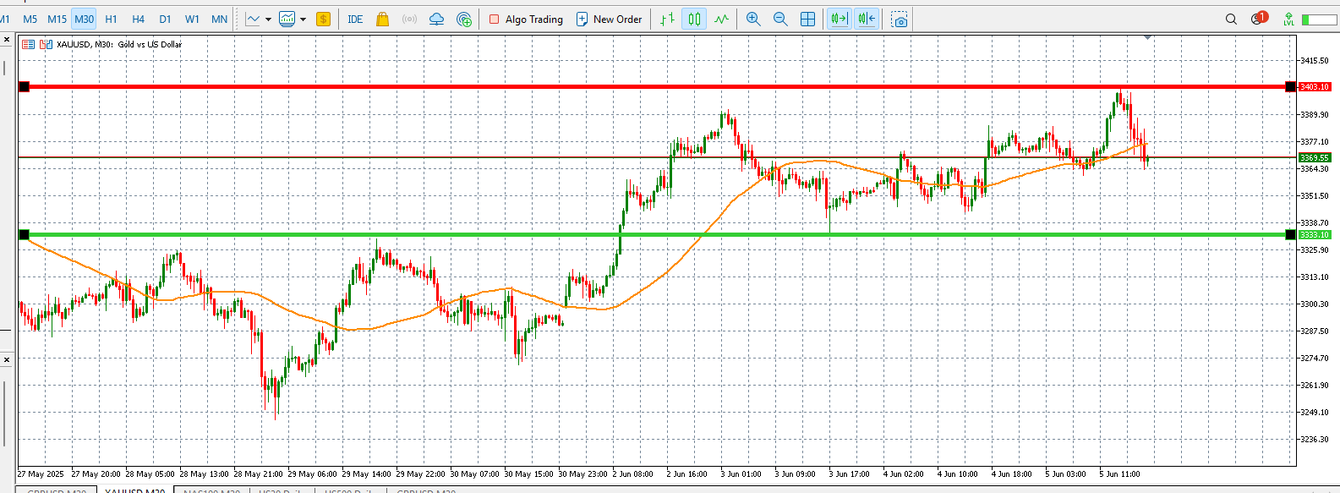Gold prices are holding their ground near $3,372 per ounce as traders sift through the macro fog: a fresh rate cut from the European Central Bank, the latest round of diplomatic ambiguity between Washington and Beijing, and looming expectations of a Fed rate pivot. While the metal hasn’t surged, its resilience under shifting policy winds and geopolitical posturing is telling.
ECB Cuts Rates – But It’s Not a Tailwind for Gold
Let’s start with the ECB. In a widely anticipated move, the central bank trimmed interest rates by 25 basis points, its first cut in this cycle. The motivation? Weak inflation, sluggish growth, and a eurozone still wobbling under trade-related uncertainty.
On paper, lower rates should favour gold. After all, the opportunity cost of holding non-yielding assets drops. But in reality, the market read the cut as an invitation to chase risk. Stocks across Europe jumped. Bond yields dipped slightly. And gold? It moved sideways.

Gold CFD Trading: Chart by XTB
Why? Because a rate cut in this context sends a signal that risk-on sentiment could return. Investors might prefer rotating into equities or higher-beta plays over traditional safe havens like gold—especially if they believe the ECB has more room to ease further.
Trump-Xi: Sound and Fury, Signifying Little
President Trump’s call with President Xi was much hyped, but not much came out of it. In typical fashion, Trump declared it “a productive conversation,” yet markets are treating the comments as little more than rhetorical blanks. No breakthroughs on tariffs. No resolution on rare earth supply disputes. No joint statement of clarity.
What’s clear, though, is that traders remain jittery. A second call is reportedly in the works, and that vague sense of anticipation—coupled with an utter lack of substance—has quietly bolstered gold’s role as a geopolitical hedge. Uncertainty remains high. And when clarity is scarce, gold benefits.
Fed Rate Cut Expectations: Priced In but Dormant
Back in the U.S., the rate narrative is slowly aligning. Trump has been vocal in calling for the Fed to cut rates, and markets seem to agree—pricing in a high probability of a cut by September.
Yet here’s the twist: the market has already baked it in. So while gold usually pops on dovish Fed pivots, this time around, it’s more of a waiting game. If anything accelerates that timeline—say, a sudden deterioration in economic data—then the dollar could weaken sharply, and gold would react strongly. But until then, we're in a holding pattern.
Eyes on Tomorrow: The NFP Wild Card
The next major catalyst? Tomorrow’s U.S. Non-Farm Payrolls (NFP) report. It’s the piece of data that could tilt the Fed narrative firmly in one direction. A weak report would revive dovish bets and could break gold out of its current consolidation zone. A strong print, on the other hand, might reinforce dollar strength and pressure gold lower.
In either case, gold remains an asset caught between diverging forces—central bank policy shifts, geopolitical theatre, and market psychology. But for now, it’s clear: while other assets are moving on hope and speculation, gold is trading on uncertainty.
And in uncertain times, that’s often its greatest strength.
